Cannonball Runners
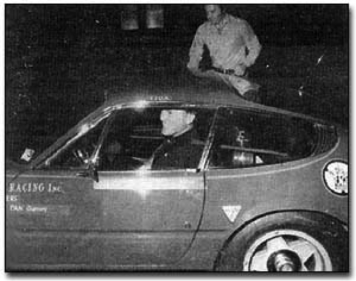
(Author and activist Brock Yates fills up the Ferrari Daytona piloted by racing legend Dan Gurney on the Cannonball Baker Sea-to-Shining-Sea Memorial Trophy Dash, 1975. Photo Car and Driver Magazine.)
A pal wrote me about a scheme to deliver recreational vehicles to Snowbird destinations down south, saving the owners the inconvenience and expense of driving to their winter roosts, and cheap travel to those willing to drive.
I am increasingly thinking about winter relocation myself, and living on a fixed income, so the idea was appealing. And that led to a contemplation of the Big Sedan era of my life- well, the real phase of it, though there is an ominously large P-71 Police Cruiser parked around here somewhere that I bought to celebrate the Age of Rolling Steel.
The Gas Crisis had provoked my experiment with the Chevy Vega Kammback GT Wagon, but I was spending a lot of time on the road, between covering accounts at several colleges in South East Michigan and Northern Ohio. And ski patrolling in the winter up at the Otsego Ski Club in Gaylord, Michigan. Dad still had his auto-industry contract and got a new car as part of his deal, but Kelvinator had been sold off in one of the consolidations that would eventually result in the death of American Motors and the terms had changed.
On the up side, he could pick the car, and it didn’t have to be a Rambler. On the down side, he had to drive it for two years before getting another one. What was interesting was that he had the option of buying the car for bottom Blue Book value, and that is how the Vega went to brother Spike and I found myself behind the wheel of a 1973 Chevy Caprice Classic.
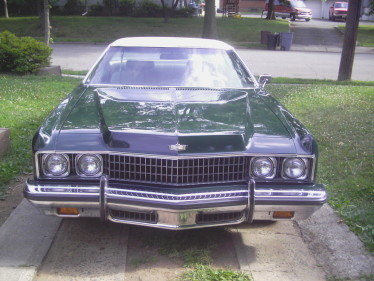
The Caprice (71-76) was the biggest Chevy ever made, so it was quite a change from the Vega. Rolling along the interstate I felt like quite the grown-up. I quit my job in 1975, and decided to spend some time driving around the country. I had ten grand in the bank, no debts, the car was paid for and life was large. So what if the gas was sort of expensive? At least it was available again, and the full-size Chevys (Biscayne, Bel Air, and Impala) were the most popular American car on the road.
Of course, like the drive-away snowbird car deliveries, you did not have to own the ride in order to take road trips. Remember a thing called the “drive-away service” that used to appear in the want-ads (remember life before Craigslist?).
The point was to link auto owners with low-budget travelers to take cars to distant places for the just cost of the gas. It used to make a lot of sense in the days when we were splitting our time between Ann Arbor and the distant Utah resort town of Park City. We would leap into the car with a cooler and twenty hours later would have left the Motor City far behind, and arrived in the snowy uplands of the Great Intermountain West.
We drove fast, and for the most part, accurately.
My favorite story about life on the road was the old Brock Yates cross-country race that ran from the Red Ball Garage in Manhattan, NYC, to Redondo Beach just north of LA. The winner was the one who had the fastest elapsed time over the public highways.
It is a measure of how things have changed that such an enterprise these days seems reckless and irresponsible- like the winning time one year by pro-racer Dan Gurney in which he modestly explained that he “at no time had ever exceeded 175mph” in his Ferrari Daytona to post the winning time.
The race itself was an act of guerrilla theater named for the famed distance driver Erwin George “Cannonball” Baker, whose exploits in the pre-interstate America were legendary. In 1933, Baker had driven coast-to-coast in a Graham-Paige Model 57 Blue Streak 8, averaging better than 50 mph for the trip. His cross-country record of 53 hours 30 minutes stood unchallenged for nearly forty years.
Hence the inspiration for the “Cannonball Baker Sea-to-Shining-Sea Memorial Trophy Dash” and the Cannonball Run movies with Burt Reynolds that followed.
Growing up in Hot Rod Detroit made us all, by definition, car people, boys and girls alike. Perhaps the testosterone coursing through our veins had something to do with the boys acting out a bit. My first speeding ticket was awarded by the Bloomfield Hills cops to me after piloting Dick Areen’s Charger R/T 440 at 120 in a 50 zone, and I was nothing special, except one of the first in the Class of ’69 to discover the wondrous properties of the police Visual Average Speed Computer And Recorder- VASCAR.
So there it is, finally. Dick had picked me up on a Saturday evening to show me the new wheels his Father had acquired at Chrysler, and he had a bottle of vodka with him. I had a full pack of Marlboros and the night was at our feet. The potential for fun was virtually unlimited. Unknown to us, the Bloomfield Hills cops had likewise acquired VASCAR, a technical innovation at least as significant as the Hemi engine, and when Dick graciously offered me the opportunity to test out the car, I drove right into the waiting trap.
Dick was a smart guy, and he had the forethought to bring the bottle of vodka with him under his coat when the cop put us in the backseat of the police cruiser, so we did not have MIP (Minor in Possession of Alcohol) in addition to the frankly amazing ticket, and the reverberations of the incident took several months to get through- like the rest of my probationary period as a first year driver. Oh well.
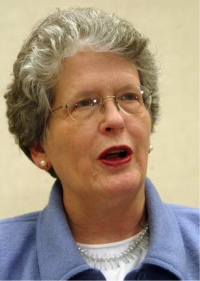
There was a lot of tension between the enforcement and regulatory community and the Car People. Downright animosity existed between motorsports enthusiasts and activists like Ralph Nader and his acolyte Joan Claybrook. Joan was a particular bur under the saddle of Car and Driver Magazine’s editor Brock Yates, who would have termed Joan the very manifestation of the Nanny State had the term existed then.
Claybrook later ran amok as the Administrator of the National Highway Traffic Safety Administration under Jimmy Carter. Her advocacy of all sorts of very practical things on the highway was catapulted to prominence during the fuel crisis, and Dick Nixon’s imposition of a national 55mph speed limit.
As we found out later, the double-nickel speed limit contained in Nixon’s National Maximum Speed Law was actually slower than the quickest average speeds of point-to-point travels of Cannonball Baker without Interstates.
The enthusiast community was pitted in direct confrontation with the new speed limit, which was viewed across the chasm of the Red State/Blue State divide of the day. There was a spirit of insurrection in the air, and Yates displayed it in each monthly issue of his irreverent magazine.
In the interest of fairness, I hasten to remind you that Nixon was a Republican of some kind, with distinct statist tendencies, a tradition carried on by other Republican chiefs.
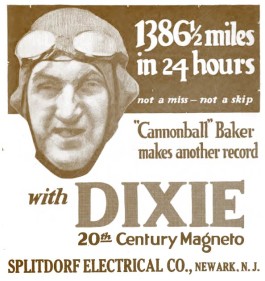
“Car and Driver” Magazine was a progressive enthusiast rag edited by literary bomb-thrower Brock Yates that went ballistic over the loss of fun with the new speed limit, which was piously supported by the insurance industry, and Ms Claybrook in particular. She wanted ugly bumpers and those pesky seatbelts and lower speed limits to protect us from ourselves.
The Sea-to-Shining-Sea race was conceived by Yates in 1971, and gained new life with the fuel crunch in ’73. The Run was intended to commemorate the exploits of the legendary driver Erwin George “Cannonball” Baker, famous for his record-setting point-to-point drives east and west and north and south. In his storied career, he made 143 cross-country motorcycle and automotive speed runs totaling about 550,000 miles. In his time he beat locomotives across the country, drove a loaded two-ton truck from New York to San Francisco in five days, seventeen and a half hours.
His most famous trip was a 1933 New York City to Los Angeles dash in a Graham-Paige 57 Blue Streak 8, establishing a coast to coast elapsed time record of two days, five hours and five minutes that stood unchallenged for nearly 40 years.
Yates was after fun- and publicity- with the Trophy Dash. It was intended both as a celebration of the inherent safety of the Eisenhower Interstate System and a challenge to the stricter enforcement of traffic control capabilities at the time.
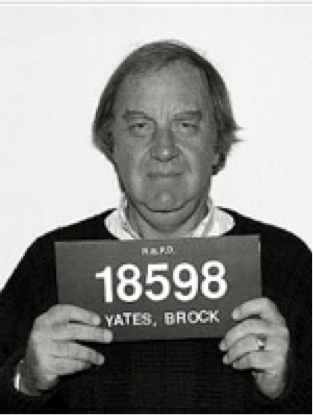
The first running of the Trophy Dash was held in May of 1971 and the winner was a 1971 Dodge Custom Sportsman van, called the “Moon Trash II.”
The race was run four more times, in November of 1971 and ’72, then went on hiatus until 1975 when I had the Caprice and the highway to myself. A final iteration was run in April of 1979, the very month I shipped out for Japan. I always wanted to participate, and the accounts of each one of the races was riveting, and none had a casualty of which I am aware. Naturally, advance publicity of a crowd of lunatics hurtling West needed to be avoided, lest Smokey be perched waiting on every highway overpass.
The most remarkable effort was by Yates himself riding with racing legend Dan Gurney. They pulled into Redondo Beach with an elapsed time 35 hours and 54 minutes to travel the 2,863 miles. That is an average speed of approximately 80 mph, while collecting only one ticket along the way.
Dan later said that snow in the Rockies cramped his style, since the overall record for official Cannonballs will stand (forever) at 32 hours and 51 minutes by Dave Heinz and Dave Yarborough in a Jaguar XJS in the last Cannonball race held in 1979.
And so, into the ashbin of history for a great party on wheels, and welcome to the grim grayness of the Safety State. There were other, unsanctioned running of the legendary Cannonball Run. In 2006, Alex Roy and David Maher flogged a heavily modified BMW M5 across the country in a new record time of 31 hours and 4 minutes.
Not to be outdone, last year Dave Black, Ed Bolian and Dan Huang drove a Mercedes CL55 AMG modified with two additional 22-gallon tanks in the trunk and shattered that mark, taking only 28 hours, 50 minutes and 30 seconds to travel from the Red Ball Garage in Manhattan to the parking lot of the Portofino Inn at Redondo Beach in California.
That record will probably will not stand forever, since they hit traffic leaving New York City.
But those feats notwithstanding, there was a certain whimsy in the original races. I mention that in the context of the 1972 drive-away experience in the Trophy Dash: four college students answered an ad to ferry a Caddy Coupe de Ville across the country, promising the Snowbird owners they would “not exceed the speed limit” and “drive only during daylight hours.”
They finished second in the race, behind Brock Yates and Dan Gurney, who drove a Ferrari Daytona, and ahead of a van that had been modified with a two-hundred gallon fuel tank to minimize gas stops.
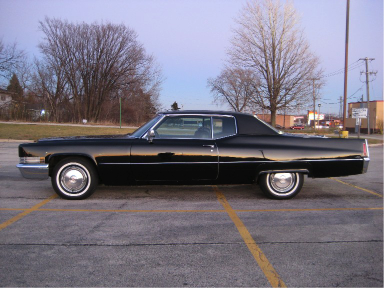
The caption under this image of the delivery Caddy was: “Didn’t burn a drop of oil on the 40-hour trip.”
Don’t accuse me of living in the past. I just couldn’t drive 55, not then and not now.
I was in the Navy by the time I got tired of the Caprice and replaced it with the biggest goddamn Oldsmobile they ever made- the Delta 88 Royale. I had that car for almost twenty years, ten of it in storage when I was overseas. What a ride. Damn, what a ride!
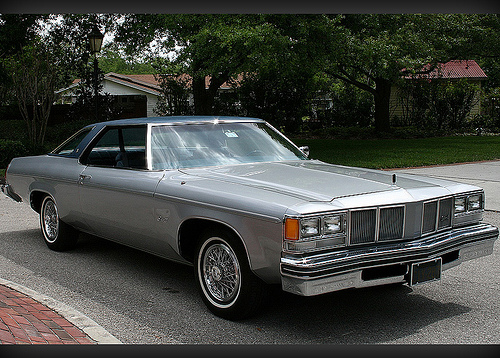
Copyright 2014 Vic Socotra
www.vicsocotra.com
Twitter: @jayare303
